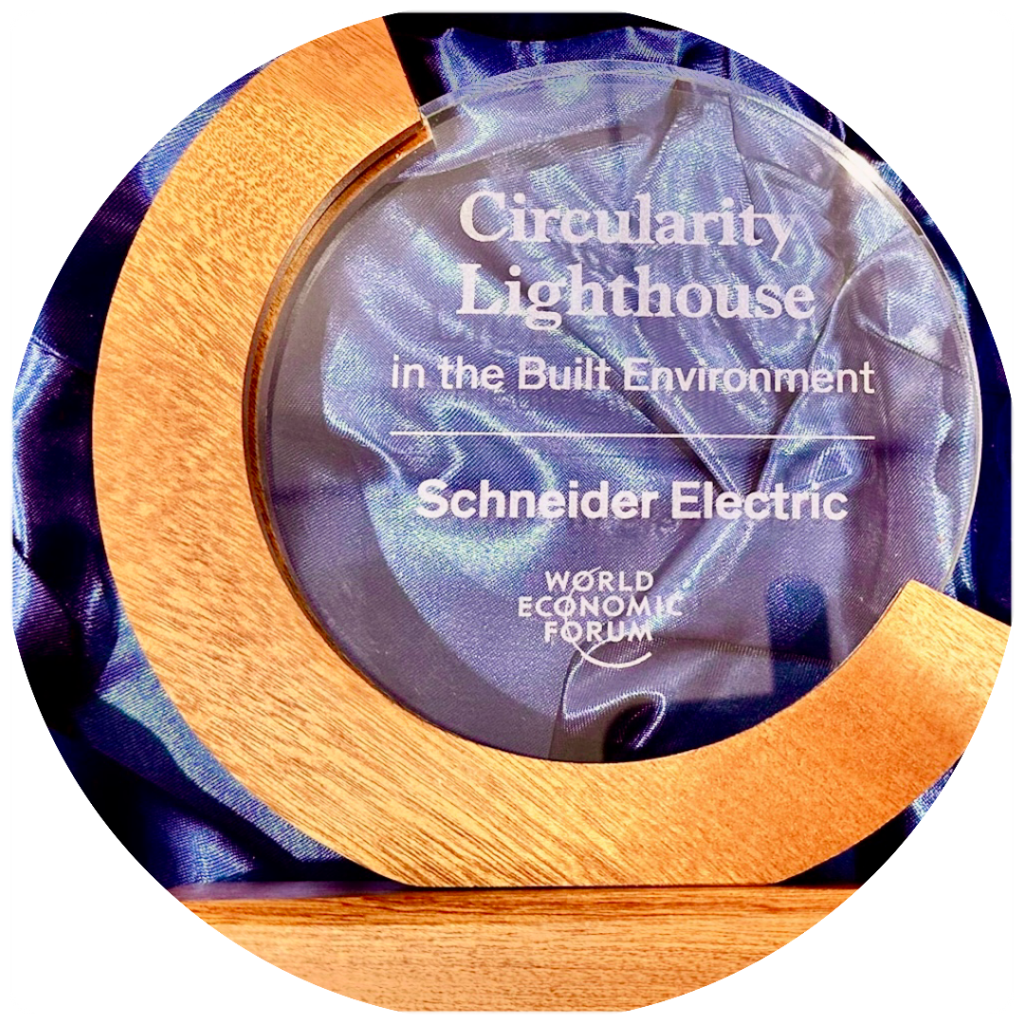
Schneider Electric,a pioneer in the digital transformation of energy management and automation, said today that it has been named one of the three global Circularity Lighthouses in the built environment by World Economic Forum and McKinsey.
This new title honors innovative circularity solutions that exhibit creativity, significant value and impact, and scale maturity. An impartial group of specialists from business, academia, and public life chose the new lighthouses.
Residential and commercial infrastructure are included in the World Economic Forum’s definition of the built environment. Taken together, these account for 39% of energy-related CO2 emissions, 33% of material consumption and waste generation, and 25% of land system change. Businesses can exchange ideas and knowledge with one another through the Forum’s Circular Lighthouse network, thereby accelerating action and scaling for increased resource efficiency.
Schneider Electric was recognized by the World Economic Forum and McKinsey for its end-to-end circular approach across a broad portfolio of its energy and building automation solutions. Through eco- design, waste-to-resources sites, and a global network of refurbishment centers, Schneider Electric has avoided approximately 513 million tons of CO2 to customers since 2017.
The company also uses 27% green materials across its products with the ambition to reach 50% by 2025. 22% of Schneider Electric’s product families have a circularity option, and more than half of Schneider Electric’s manufacturing sites recover more than 99% of waste.
“Circular business models offer compelling sustainability and commercial benefits,” said Peter Herweck, Schneider Electric’s Chief Executive Officer. “We look forward to the opportunities this new Circularity Lighthouse network offers to learn, share, and accelerate action.”
One example is how Schneider Electric gives its MasterPact MTZ circuit breakers a second life. Refurbished at the MasterTech plant in France, these circuit breakers are collected from customers at the end of life, disassembled, diagnosed, upgraded and tested before being put back on the market.
At the recent World Economic Forum’s annual meeting in Davos, Switzerland, Herweck also urged that greater deployment of existing technologies is needed to keep climate change from spiraling out of control.
“With energy accounting for 80% of carbon emissions, the energy transition is central to decarbonization. The potential of AI is currently capturing everyone’s attention. But let’s not forget that existing technologies – both renewable energy generation and digital and electrification tools that lower energy demand by rendering sites and operations far more energy efficient – can sharply reduce emissions now. There’s no time to wait for tomorrow’s solutions when much more can be achieved with what we have today,” he added.
IMPACT Supply Chain Program
Schneider Electric’s IMPACT Supply Chain program includes supply chain design and circular business concepts. This is the next phase of the company’s supply chain transformation, with the goal of improving the environment and customer experience. Key pillars of it are:
- People – Schneider’s people are empowered to innovate and make a positive impact for customers every day.
- Planet – Schneider Electric is building a sustainable, responsible, and net-zero ready supply chain.
- Customers – Schneider Electric’s reliable supply chain delivers industry-leading quality.
- Performance – Schneider Electric drives performance through advanced technology, smart and unified processes, regional ecosystems, and collaborative design.

No Comments